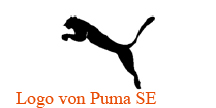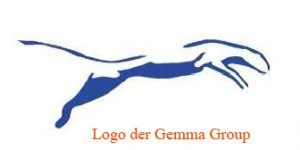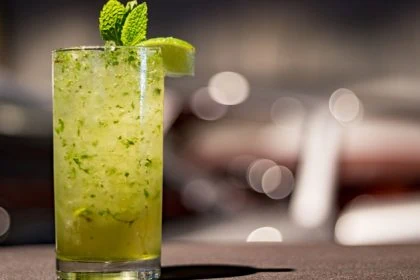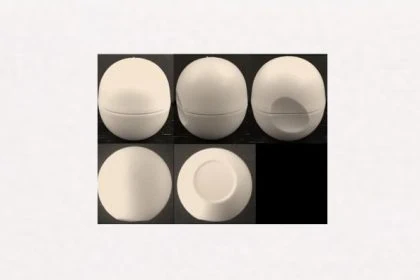How is the correct valuation of older trademarks carried out? The action of the EUIPO Board of Appeal is at the centre of the last act of a long-standing trade mark dispute over Puma’s logo and its jumping cougar. The case was brought before the European Court of Justice yesterday.
In September 2016, the case that was negotiated yesterday was already before the European Court of Justice (CJEU). At that time, Puma brought an action against the decision of the EUIPO Board of Appeal, which did not properly take into account the appreciation of Puma’s earlier trademarks. The intensity of appreciation of earlier marks is always in the overall assessment of the existence of an impairment within the meaning of Art. 8.5 of Regulation No. 207/2009, the European Court of Justice ruled last year. This applies both to the examination of whether there is a link between the marks and to the examination of whether there is an impairment within the meaning of Art. 8.5 of Regulation No. 207/2009.
Update of 30 January 2018:
Puma victorious against EUIPO in Opinion of Advocate General
Appreciation of earlier trademarks is a requirement for the Board of Appeal: last week, the European Court of Justice’s Advocate General ruled in Puma’s final application.
The EUIPO Board of Appeal should have either asked for additional evidence of the reputation of the earlier marks. Or it should have justified why the facts established so far concerning the reputation of the earlier mark should not apply in the present case.
Background of the case
Although the only point of contention in this case is now the procedure for determining the valuation of the earlier figurative marks, this case is based on an action brought against the registration of a very similar figurative mark. In 2013, the Italian Gemma Group Srl had registered a blue jumping feline predator as an EU figurative trademark with EUIPO. Puma appealed against this and pointed out the very great similarity to his earlier figurative marks.


Chronological sequence of the conflict:
- 8 April 2013 : Blue Cat of Gemma Group was registered as EU figurative trademark
- 8 July 2013: Opposition by Puma to this registration
- 10 March 2014: the Opposition Division rejected the Puma’s opposition
- 7 May 2014: Puma raised according to Art. 58 to 64 of Regulation No. 207/2009 appealed to the EUIPO against the decision of the Opposition Division
- 19 December 2014: EUIPO’s Fifth Board of Appeal dismisses Puma’s appeal
- 1 April 2015: Puma brought an action against the decision before the European Court of Justice
- 9 September 2016: CJEU ruled in favour of Puma and annulled the decision of the EUIPO Board of Appeal
- 7 November 2016: EUIPO appealed before ECJ and called for annulment of the judgment
Puma cited three main reasons for its action against EUIPO:
- that the Board of Appeal rejected the evidence as to the reputation of the earlier marks and concluded that their reputation had not been demonstrated. At the same time, it should be noted that, on the one hand, EUIPO’s recognition of earlier trade marks has been established in three recent decisions confirmed by several national decisions.
- an infringement of the Art. 75 and 76 of Regulation No 207/2009 by virtue of the fact that the Board of Appeal had examined the evidence of the reputation of the earlier marks while the Opposition Division had not examined them.
- an infringement of Art. Section 8 (5) of this Ordinance. The intensity of the appreciation of the earlier marks is reflected in the overall assessment of the existence of an impairment within the meaning of Art. 8 (5) of Regulation No 207/2009 must be taken into account, both when examining whether there is a link between the marks and when examining whether there is an impairment within the meaning of Article 8 (5) of Regulation No 207/2009. 8 (5) of Regulation No. 207/2009, which are separate and indispensable prerequisites.
Duty to translate – even perfectly clear – evidence?
 In the proceedings, it was raised that the Board of Appeal had refused to take into account certain evidence which had not been translated. Puma argued that although the market study on France was written in French, it did not require any translation as regards the reputation of the earlier marks, since it was “perfectly clear” in this respect. In addition, the same study had been submitted under other opposition procedures without the EUIPO authorities raising any objections.
In the proceedings, it was raised that the Board of Appeal had refused to take into account certain evidence which had not been translated. Puma argued that although the market study on France was written in French, it did not require any translation as regards the reputation of the earlier marks, since it was “perfectly clear” in this respect. In addition, the same study had been submitted under other opposition procedures without the EUIPO authorities raising any objections.
EUIPO refers to Rule 19 (3) of Regulation No 2868/95, which stipulates that evidence shall be provided in the language of the proceedings and within the time limit for the submission of the original dossier.
The Board of Appeal was therefore right to believe that the documents not translated into the language of the proceedings could not be taken into account.
EUIPO Board of Appeal should have requested evidence
The CJEU notes, however, that the Board of Appeal should have either asked the applicant to provide additional evidence of the reputation of the earlier marks. This is all the more the case since in other decisions on Puma’s marks their fame had been confirmed by a relatively large number of national decisions and a judgment of the Court. Alternatively, the Board of Appeal should have indicated the reasons why it considered that the appreciation facts made in those earlier decisions should not apply in the present case.
As this had not been done, the CJEU ruled in favour of the plaintiff Puma. The contested decision was annulled so far as it dismissed the opposition of the applicant Puma without having to examine the other pleas in law brought by the applicant. Since the Board of Appeal had not fully examined the reputation of the earlier trade marks, the Court of Justice thought to be unable to rule on the third plea alleging infringement of Art. Article 8 (5) of Regulation No. 207/2009.
Yesterday, the case was again brought before the European Court of Justice. The pronouncement of the verdict can be awaited with suspense. Because for all companies with established protected trademarks, the appreciation of these brands remains a highly topical issue.
Are you interested in brand or trade mark protection?
Please take your chance and contact us. Our lawyers are experienced in trademark and patent law, national and international law.
Sources:
Opinion of Advocate General (Case C‑564/16 P)
pictures:
lanZA /pixabay.com / CCO License || skeeze /pixabay.com / CCO License







